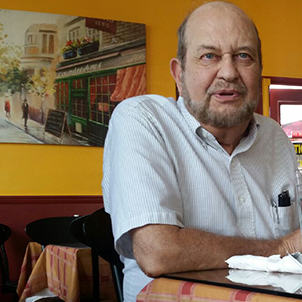At the very moment when California’s largest utility company was being assessed a $14 million fine for failing to report discovery of flawed records on its gas pipelines, that same company in 2014 began asking for well over $1 billion in rate increases to pay for repairs to the very same pipeline system.
This is Pacific Gas & Electric, the same huge utility company – California’s largest – that in 2016 was criminally convicted in federal court of safety violations and obstruction of justice related to the 2010 San Bruno pipeline explosion that killed eight persons and destroyed dozens of homes. The fine: A paltry $3 million. No PG&E executive went to prison for the deaths. Not a single firing was mandated by federal or state authorities.
Meanwhile, PG&E kept right on pursuing its routine every-three-years-or-so rate increases for natural gas and electric service, asking initially for $4.6 billion in additional charges to customers.
The company ended up getting $2.37 billion over three years in the usual kabuki dance conducted by the state Public Utilities Commission – this pattern sees the Big Four of PG&E, Southern California Edison, Southern California Gas and San Diego Gas & Electric routinely ask for huge increases, then “settle” for half their original request, with the PUC then bragging about how much it has saved consumers.
But PG&E regularly posts profits approaching $1 billion a year. It is legitimate to ask whether it should be entitled to any rate increase when it has misbehaved as egregiously as it has over the last eight years or more. (PG&E collected more than $60 billion in gas pipeline maintenance funds from customers in the 60 years preceding San Bruno, but there has never been an accounting of where that money went.)
Here is a criminal company demanding ever more from its customers, and the PUC simply hands it over.
No one even suggests forcing PG&E to divest any of its holdings to publicly-owned Community Choice Aggregation power suppliers as a consequence of its repeated, frequent bad behavior and what federal authorities called negligence.
From $137 to $150
Instead, the company’s customers pay more than ever. The typical monthly bill has risen from about $137 at the end of 2015 to more than $150, an increase of 9 percent.
Even when PG&E was fined by the state last year for violating pipeline safety standards, 53 percent of that money — $850 million – was earmarked for repairs and improvements that customers funded years ago and were supposed to have been made long since.
The company saved another $100 million because its entire fine was tax deductible.
Yet in an interview published this spring, the company’s new chief executive, Geisha Williams, bragged that PG&E’s rates are lower than the national average of a $190 per month. Even she concedes this is not because of efficiency, but due to climate: There are few blizzards in PG&E’s vast service territory except in sparsely-populated mountain areas.
All of which means that even with a new CEO and even with a new self-described emphasis on safety, PG&E still has not deviated from its longtime goal of forcing customers to put up new cash continually to bring its system up to the level of safety it should have had all along.
As consumers pay their ever-increasing bills – further increases are upcoming, along with shifts in the rate tiers under which bills are figured – no one really knows just how much PG&E actually needs to stay solvent. The same is true for the other big privately-owned utilities.
But we do know that customers of all three major California gas utilities have paid scores of billions of dollars in maintenance money over many years. They have every reason for righteous indignation as they look at the increases on their monthly bills, which add up to well over $100 yearly for the average residential customer.
But they will get no solace from PG&E, despite the new happy and safety-conscious face it is putting on. Which means the audacity and the chutzpah of PG&E has paid off, bigly.
Mr. Elias is author of the current book “The Burzynski Breakthrough: The Most Promising Cancer Treatment and the Government’s Campaign to Squelch It,” now available in an updated second edition. His email address is tdelias@aol.com
For more Elias columns, go to www.californiafocus.net

